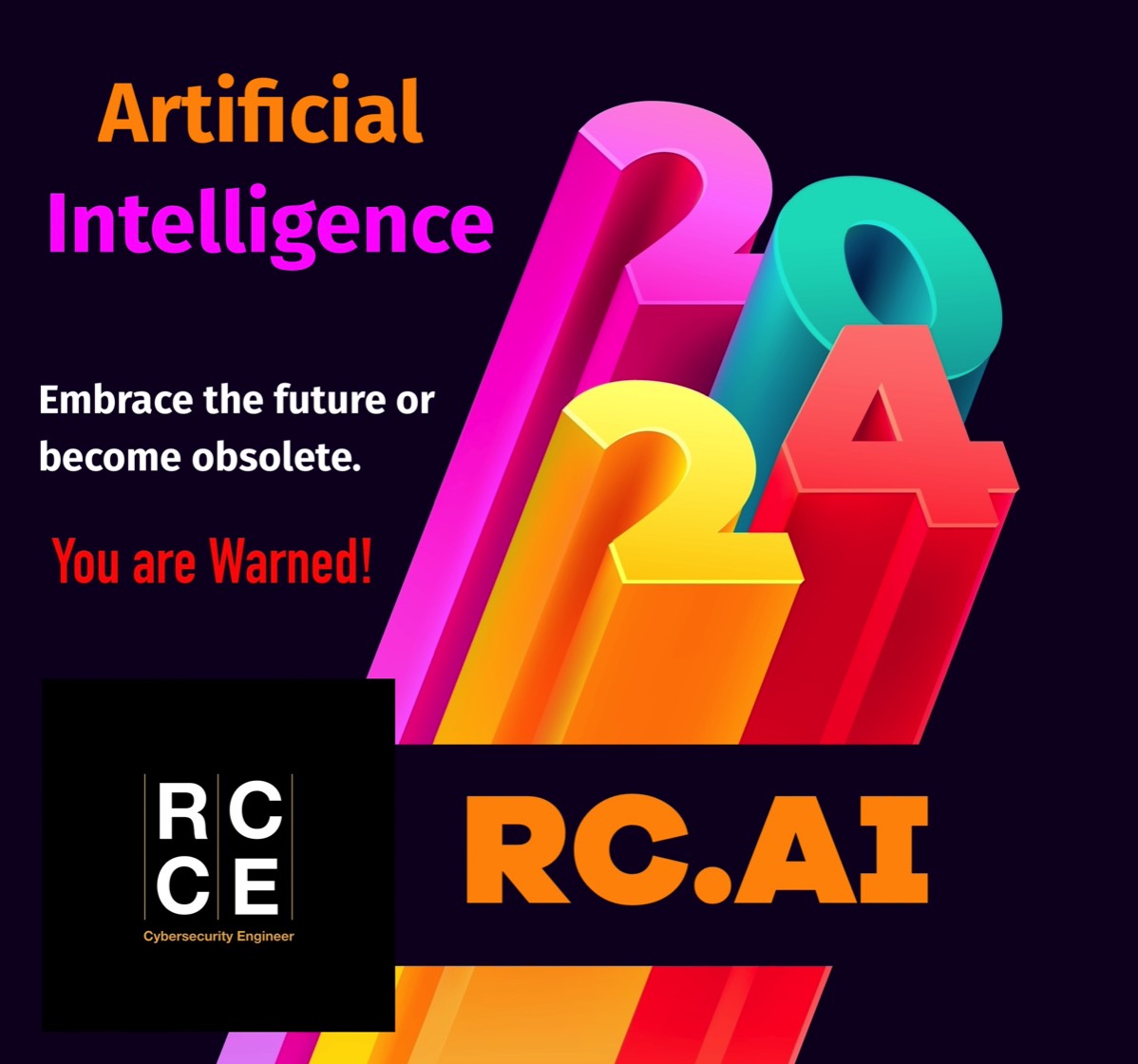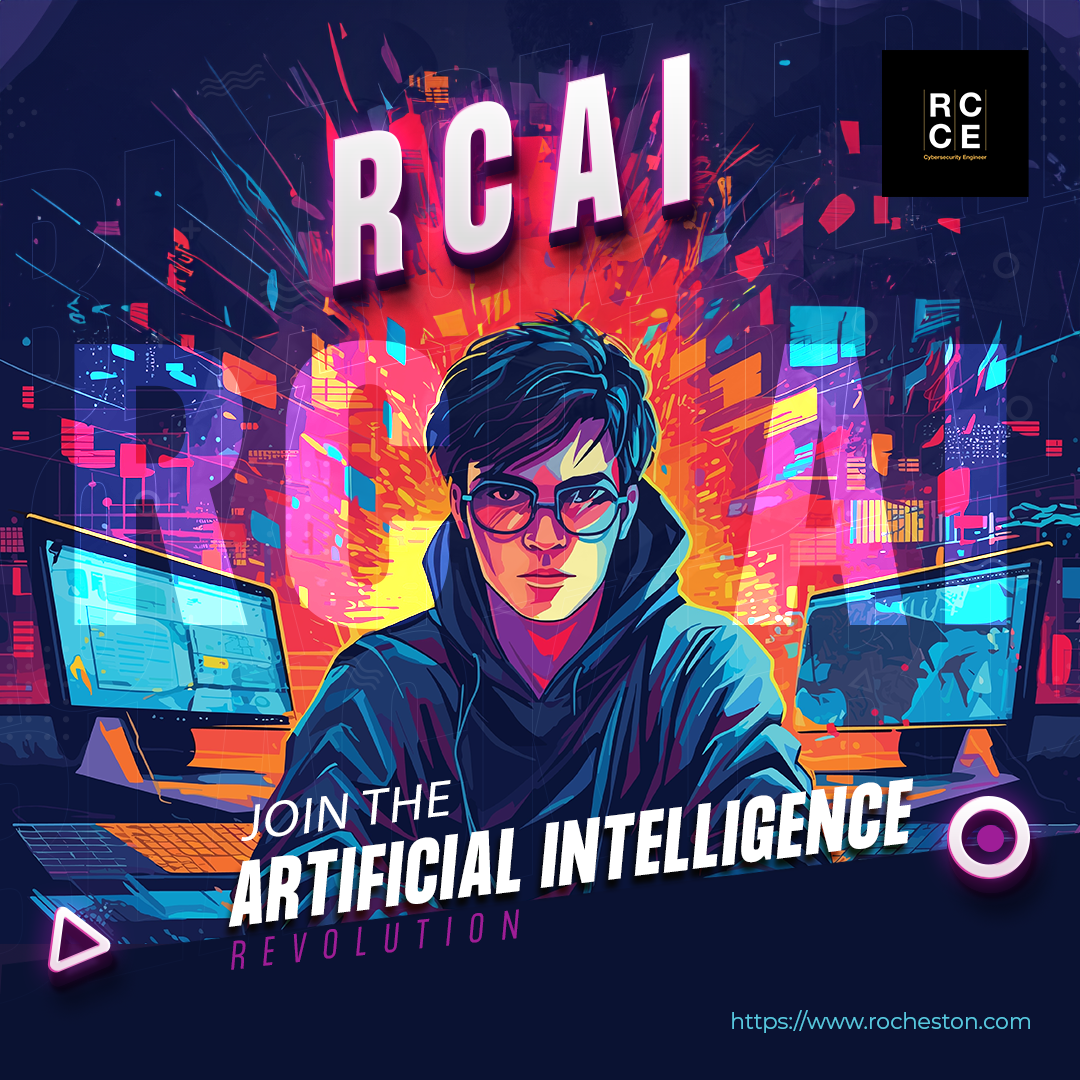If you will tell me precisely what it is that a machine cannot do, then I can always make a machine which will do just that.
John Von Neumann, 1948
Demand for Artificial Intelligence
The demand for AI skills extends to almost every field imaginable. As a result, professionals who are proficient in AI and related technologies like machine learning, robotics, natural language processing, and predictive analysis are on top of the hiring pyramid.
The ability to understand and manipulate big data, in conjunction with AI skills, is considered a highly valuable tandem of skills. Due to the rapid digitalization and the continuous advancement of technology, the demand for AI skills is likely to rise even more in the future.
Technology Sector
With tech giants like Google, Facebook, Amazon, and IBM investing heavily in AI technology, the demand for AI specialists in this sector is skyrocketing. AI is used here for automating repetitive tasks, analyzing big data, and enhancing user experience by making algorithms more intuitive and sophisticated.
Healthcare
AI's potential to transform healthcare is immense, with its ability to analyze complex medical data for improved diagnostics and treatment. Hence, there is a rising need for AI specialists who can build AI and machine learning models for predicting patient health outcomes, automating administrative tasks, developing virtual nursing assistants and creating precision medicine strategies.
Banking and Finance
AI is revolutionizing the banking and finance sector by enhancing customer service through chatbots, detecting fraudulent activities, making precise predictions for investments, and automating routine tasks. Specialist in AI and machine learning, therefore, are in high demand here.
Manufacturing
AI in the manufacturing sector helps with predictive maintenance, which reduces operational costs. It also improves supply chain efficiency. Professionals proficient in artificial intelligence can drive the digital transformation in this industry.
Retail
The retail sector uses AI for inventory management, personalized marketing, customer service, predicting future purchase patterns etc. Therefore, they need AI-specialized workforce.
Education
AI is being used to automate grading, give students and educators helpful feedback, and adjust educational techniques based upon responses. AI experts can contribute greatly in this sector to create such innovative solutions.
Research
AI research is an emerging field, and researchers working on AI algorithms, machine learning models, and data analysis are highly sought after.
Government Services
AI contributes to enhancing security, automating paperwork, improving decision making, and much more. Therefore, governments around the world are also seeking AI specialists. Companies embracing AI
Artificial Intelligence (AI) has emerged as one of the leading technological advancements applicable in various sectors globally. In business, companies can experience numerous benefits by using AI in their operations:
1. Cost Reduction: AI can automate routine tasks, resulting in cost savings. Companies can utilize AI to automate customer service, data analysis, quality checks, and certain elements of production, which are otherwise expensive if performed manually.
2. Increased Productivity: AI technology can perform tasks round the clock without breaks, unlike human beings. This leads to increased productivity, faster turnaround times, and higher profit generation.
3. Improved Decision Making: AI algorithms can analyze vast amounts of data and generate insights for better decision-making. This can lead to improved strategies, operational efficiency, and innovation.
4. Enhanced Customer Experience: AI can provide personalized experiences to customers by analyzing their behavior, preferences, and purchase history. AI-powered chatbots can provide instant, accurate responses to customer queries, leading to enhanced customer satisfaction.
5. Predictive Capabilities: AI can forecast market trends and consumer behavior, enabling companies to stay ahead of their competition. Businesses can plan their strategies based on these AI-generated forecasts to achieve their sales and marketing objectives.
6. Improved Accuracy: AI significantly reduces the risk of errors in tasks, particularly in areas involving big data analysis. Machine learning algorithms ensure more accurate results, increasing the overall quality and value of work done.
7. Risk Management: AI can identify potential risks and fraudulent activities through predictive analysis, enabling enterprises to take necessary precautions to prevent losses.
8. Product Innovation: AI can help in developing new products and services by generating new combinations of existing features or suggesting entirely new features.
9. Support for Remote Work: AI-powered tools can enable more efficient remote working environments, offering benefits like automatic meeting scheduling, task management, and even improving cybersecurity for remote connections.
10. Training and Development: Companies can use AI to develop personalized training programs for their employees, leading to better performance and productivity.AI Can Generate Realistic Images
Artificial Intelligence (AI) and machine learning algorithms, specifically Generative Adversarial Networks (GANs), demonstrate an incredibly impressive ability to generate images. Through a blend of coding and design, AI can create both realistic and abstract images that are almost indistinguishable from those created by human hands.
AI Turning Into a Booming Industry
AI has become a billion-dollar industry in less than a decade. The industry holds enormous possibilities for enriching visual perceptions, decision-making ability and to react and adapt to specific fields of work. Generative AI
Generative AI is a subset of artificial intelligence that leverages machine learning models, particularly deep learning models, to produce creative, original content. It utilizes algorithms that mimic human ingenuity and creativity, breathing life into AI to generate human-like text, image, speech, and even designs.
Generative AI applications include creating realistic images, generating lifelike human speech, improving computer graphics in video games and movies, aiding in medical diagnostics, and composing music. In business, it has numerous applications such as generating personalized marketing content, innovative product designs, and business insights.
AI Applications
The growth of AI applications in areas such as face recognition, online searches, autonomous vehicles, robots, missiles, tumor detection, data analytics, gaming consoles, machine learning and more, is pushing industries to keep up with the certainty of future change. There are more than 700,000 job postings for AI Engineers.
The rising demand for AI specialist engineers is clear, as there is an increasing demand for their skills. The likes of Amazon have recently advertised 1,000 AI-related job vacancies, and Google Corp has opened 500 such positions in the U.S. alone. Additionally, tech titans Microsoft and Sony have entered into a strategic agreement to develop image sensor chips that aim to offer a highly intuitive and friendly AI experience.Marvelous feats of Machine Learning is making AI hot! Very hot!!
AI has already laid the foundation for future software solutions. It's enhancing people's lives with a combination of clever applications, intelligent computer systems, smart assistants, and the most recent smart-sensor technologies to provide real-time solutions anywhere and at any time. So, as the saying goes: Take advantage of opportunities when they present themselves!
AI is the buzzword of today, with 'intelligent assistants' at the heart of AI, supported by machine learning algorithms and Python programming. An AI engineer is armed with the necessary understanding of computer science, psychology, data science, mathematics, and machine learning in specific ratios.
AI Revolutionizing the Future Cars
Every popular car maker in the world - Audi, Volvo, Tesla Motors, Mercedes-Benz, and General Motors, are testing self-driving vehicles.
The sophisticated AI algorithms are developed to offer enhanced experiences and new capabilities for car users. The AI technology offers an entirely new development paradigm where things exponentially improve by predicting beforehand what the car user needs. AI has pioneered in paving the way for “road-autonomy” by redefining the in-car experience, designing natural user interfaces, personalization and continuous driver awareness monitoring.
Business Leaders Embracing AI
Artificial intelligence (AI) has significantly shaped the world of business in recent years. With an array of potential benefits and capabilities, it’s no surprise that business leaders around the globe are embracing AI technologies.
One significant way that business leaders are using AI is for data-driven decision making. AI tools can analyze significant volumes of data rapidly, providing valuable insights that help business leaders make informed decisions. Industries ranging from healthcare to financial services are leveraging this powerful technology to make their operations more efficient and effective than ever before.Machine Learning
Deploying machine learning algorithms, scientists and engineers have developed functionalities like wake word detection, automatic speech recognition, natural language understanding, contextual reasoning, dialog management, question answering, converting text-to-speech and so on. Alexa is revolutionizing daily conveniences like playing music, switching between TV channels, searching information, controlling smart home, to much more by accessing computing resources available via Amazon Web Services (AWS) and its large-scale heterogeneous data resources.
The role of AI in home automation is about exploring the use of contextual information for adapting language models (LMs) to each user agent interaction. Automatic Speech Recognition (ASR) systems are key to such interactions. Building language models (LMs) for ASR systems is to learn models that can be trained to predict the conditional word probabilities given the context of the previous words.
AI for Capturing Cyber Threat Intelligence
AI-powered cybersecurity solutions are here. The perfect combination of AI and machine learning capabilities of cyber security, accelerates the detection of malware and network intrusion over large networks with higher speed and accuracy. Threat detection being a very specialized function, enabling AI-powered machines to learn from past cyber threats and gradually adapt to complex data, offer better security solutions against complex cyber threats we face today.
AI enables organizations to gather pre-reconnaissance data (including anomalies, botnet and phishing detection) that can be used in procuring cyber threat intelligence. Gathering of threat intelligence is the first line of defense in the cyber security infrastructure, followed by the reactive security systems such as intrusion detection systems (IDSs) and mitigation techniques.
AI bringing about a paradigm shift in businesses
Artificial Intelligence (AI) is bringing about a paradigm shift in various business domains, redefining the way industries operate and strategize. With the burgeoning technologies of machine and deep learning, predictive analysis, natural language processing, AI is ushering in an era of smart automation and decision-making capabilities that are revolutionizing business models.
AI is transforming businesses by enabling them to leverage data more effectively. Businesses today generate vast amounts of data that carry vital insights into consumer behavior, market trends, and operational effectiveness. AI, with its advanced algorithms and computing power, can manage, analyze and interpret this complex data, offering valuable business intelligence that can drive informed decision-making.
Artificial intelligence is driving the greatest disruption to our global economy since industrialization, and Microsoft is an amazing partner as we develop solutions to empower companies and workers to meet that disruption head on.
Jake Schwartz, CEO and co-founder of GA
RCAI Engineer
The RCAI Engineer certification course is designed such that upon the course completion, the RCAI Engineer is up and ready for a productive role in the AI projects. Therefore, the RCAI certification requires the learner to have a basic knowledge of some of the related subjects including basics of Python programming language, calculus & linear algebra and probability.
With the accelerated growth in the field of AI, the market demands professionals with software knowledge and skills to handle AI applications. Keeping this employment demand in mind, the governments of the US and Europe have approved of several job titles with appropriate remuneration and job benefits.
Module 1 - Introduction to Artificial Intelligence
- Opening Concepts
- Definition of AI and its Importance
- What is Artificial Intelligence?
- Difference between AI, Machine Learning, and Deep Learning
- Evolution of AI
- Core Components of AI Systems
- Data acquisition and processing
- Algorithms and models
- Hardware and software infrastructure
- History and Evolution of AI
- Key Historical Milestones in AI
- Major Contributions and Contributors to the AI Field
- Classification of AI
- Types of AI: Narrow AI, General AI, and Super AI
- Current Applications and Limitations of AI
Module 2 - Fundamentals of Machine Learning
- Understanding Machine Learning
- Overview of Machine Learning
- Supervised vs. Unsupervised Learning
- Reinforcement Learning
- Datasets and Data Preprocessing techniques
- Algorithms of Machine Learning
- Common Algorithms in Use Today
- Regression, Clustering, and Decision Trees
- Evaluating Model Performance
- Accuracy, Precision, Recall, F1 Score
Module 3 - Mathematical Foundations
- Linear Algebra
- Vectors, Matrices, and Operations
- Eigenvalues and Eigenvectors
- Calculus
- Derivatives and Integrals
- Gradient Descent
- Probability and Statistics
- Probability Theory
- Statistical Measures and Distributions
Module 4 - Python Programming for AI
- Python Basics
- Syntax, Variables, and Data Types
- Control Structures
- Advanced Python
- Libraries and Frameworks (NumPy, Pandas)
- Data Visualization (Matplotlib, Seaborn)
- Python for AI
- Introduction to Scikit-Learn
- Using Python for Simple ML Models
Module 5 - AI Frameworks
- TensorFlow
- Understanding TensorFlow Architecture
- Building Models in TensorFlow
- PyTorch
- Fundamentals of PyTorch
- Building and Deploying Models in PyTorch
- Additional Frameworks
- Overview of Other AI Frameworks (Keras, Theano)
- Choosing the Right Framework for Your Project
Module 6 - Data Science Fundamentals
- Data Exploration
- Understanding Your Data
- Cleaning and Preparing Data
- Data Manipulation
- Using Pandas for Data Manipulation
- Time Series and Text Data Handling
- Data Visualization
- Advanced Visualization Techniques
- Interactive Data Exploration Tools
Module 7 - AI Applications Audio
- Speech Recognition
- Basics of Sound Processing
- Implementing Speech Recognition Systems
- Music Generation
- AI in Music: Composition and Performance
- Case Studies: Tools and Applications
Module 8 - AI Applications Coding
- Automation and Scripting
- Writing Scripts to Automate Tasks
- Building Simple AI-Driven Applications
- AI Integrated Development
- Setting Up Development Environments for AI
- Debugging and Testing AI Applications
Module 9 - AI Applications Design
- User Experience (UX) and AI
- Principles of AI-focused UX Design
- Designing Intuitive User Interactions with AI
- AI in Graphic Design
- AI Tools for Graphic Designers
- Case Studies: AI-generated Visual Content
Module 10 - AI Applications Education
- AI in Educational Tools
- Adaptive Learning Systems
- AI Tutors and Assistance
- AI for Personalizing Education
- AI in Curriculum Design and Personalization
- Impact of AI on Educational Outcomes
Module 11 - AI Applications Financial
- AI in Fintech
- Fraud Detection Systems
- Algorithmic Trading
- AI in Financial Modeling
- Credit Scoring Models
- Risk Management
Module 12 - AI Applications Images
- Image Processing with AI
- Introduction to Computer Vision
- Building Image Recognition Systems
- Generative Image Modeling
- Neural Style Transfer
- Generative Adversarial Networks (GANs)
Module 13 - AI Applications No-Coding
- No-Code AI Tools
- Platforms for AI without Coding
- Building AI Models Using Drag and Drop Interfaces
- Capabilities and Limitations
- What Can Be Achieved With No-Code AI Tools?
- Comparisons with Coding-Based AI Development
Module 14 - AI Applications Personal Chatbots
- Understanding NLP Foundations
- Building a Basic Chatbot
- Advanced Chatbot Features
- Integrating Chatbots with APIs
- Creating Context-aware Chatbots
Module 15 - AI Applications Sales
- AI in Sales Enhancement
- Predictive Analytics for Sales Forecasting
- Customer Relationship Management (CRM) Tools
- AI-Driven Sales Strategies
- Chatbots and Automation in Sales
- AI Tools for Personalization in Sales
Module 16 - AI Applications Video
- Video Content Analysis
- Video Processing Basics
- Object and Motion Detection Techniques
- AI in Video Production
- AI Tools for Editing and Production
- Advanced Applications like Deepfakes
Module 17 - AI Applications Writing
- Natural Language Generation
- Using AI for Content Creation
- Understanding Language Models
- AI Tools for Writers
- Grammar and Style Enhancement Tools
- Interactive Storytelling with AI
Module 18 - AI Code Cheatsheet
- Creation of Quick Reference Guides for AI Development
- Best Practices and Useful Code Snippets for AI
Module 19 - AI Data Models
- Understanding Data Models
- Basics of Data Modeling in AI
- Types and Uses of Data Models
- Building and Tuning Data Models
- Techniques in Training Data Models
- Evaluating Performance and Tuning Models
- Kaggle Data Models
- Hugging-face Data Models
Module 20 - AI Deep Learning Essentials
- Introduction to Deep Learning
- Overview of Deep Neural Networks
- Activation Functions and Layers
- Advanced Techniques in Deep Learning
- Convolutional Neural Networks (CNNs)
- Recurrent Neural Networks (RNNs) and Long Short-Term Memory Networks (LSTMs)
Module 21 - AI Facial Recognition
- Basics of Facial Recognition
- How Facial Recognition Works
- Ethical and Privacy Concerns
- Implementing Facial Recognition
- Developing a Simple Facial Recognition System
- Advanced Uses of Facial Recognition Technology
Module 22 - AI in Cybersecurity
- AI for Threat Detection
- AI in Cyber Attack Detection and Response
- Machine Learning Models for Threat Detection
- AI in System Security
- AI for Network Security
- Ethical Implications of AI in Cybersecurity
Module 23 - AI Object Detection
- Introduction to Object Detection
- Basics of Object Detection
- Tools and Frameworks Used in Object Detection
- Implementing Object Detection
- Building an Object Detection Model
- Case Studies and Applications
Module 24 - AI OpenAI and ChatGPT
- Introduction to OpenAI and ChatGPT
- Overview of OpenAI
- Understanding ChatGPT and its Capabilities
- Practical Applications and Ethical Considerations
- Implementing Projects with ChatGPT
- Addressing Ethical Challenges in Usage
Module 25 - AI Technologies
- Survey of AI Technologies
- Overview of Key AI Technologies in Use Today
- Comparing Different AI Technologies and Their Uses
- Future Trends in AI Technologies
- Emerging Technologies in AI
- Predictions for Future AI Developments
Module 26 - Artificial Intelligence Labs
- Continuous Hands-On Sessions
- Lab Session 1–8: Practical Implementation and Testing of AI Concepts and Models
- Collaborative Projects, Competitions, and Group Discussions
Module 27 - Ethics and Regulations in AI
- Ethical Issues in Artificial Intelligence
- Fundamental Ethical Concerns in AI
- Case Studies on Controversial AI Applications
- Regulations and Policies
- Global AI Policies and Regulations
- Developing And Implementing Ethical AI Guidelines
Module 28 - Generative Art
- Basics of Generative Art
- Overview of Generative Art
- Tools and Techniques Used in Generative Art
- Creating AI-Driven Art
- Practical Session in Creating Generative Art
- Exploring the Intersection of AI and Human Creativity
Module 29 - Amazon SageMaker
- Getting Started with SageMaker
- Introduction to Amazon SageMaker
- Setting Up and Configuring Environments
- Deploying Models with SageMaker
- Building and Training Models in SageMaker
- Model Deployment and Performance Monitoring
Module 30 - Google Vertex AI
- Introduction to Google Vertex AI
- Overview and Setup of Vertex AI
- Features and Tools within Vertex AI
- Deploying ML Models with Vertex AI
- Model Training and Evaluation
- Implementing Vertex AI in Real-World Projects
Module 31 - Microsoft Azure
- Overview of Microsoft Azure AI
- Introduction to Azure AI and its components.
- Understanding Azure's role in the AI ecosystem.
- Review Azure AI solutions and real-world applications.
- Setting Up Azure AI Environment
- Creating an Azure account and navigating the Azure portal.
- Setting up an Azure environment for AI projects.
- Understanding cost management and compliance in Azure.
- Building Machine Learning Models with Azure ML
- Introduction to Azure Machine Learning Studio.
- Creating and training models using Azure ML designer.
- Understanding data storage and compute options in Azure ML.
- Advanced Azure Machine Learning
- Advanced training techniques using Azure ML Workbench.
- Automated ML: Feature engineering, model selection, and hyperparameter tuning.
- Utilizing Python and R within Azure ML for custom scripts.
- Monitoring and managing deployed AI models.
- Ensuring security and compliance in Azure AI implementations.
Rocheston AINA Operating System
Meet Rocheston AINA, our advanced Artificial Intelligence (AI) operating system. Rocheston AINA hosts a vast library of machine learning models, artificial intelligence tools, frameworks, and code. Our RCCE students are in for an engaging and intellectually stimulating experience with this cutting-edge operating system powered by AI.
Rocheston AINA is included as a part of our comprehensive RCCE training program.Rocheston can help you in your amazing journey as an Artificial Intelligence expert with access to its exhaustive course materials, interactive sessions and innovative training solutions. Organizations are focussing on various business applications of AI on the enterprise level and that is exactly where Rocheston would want you to fit in!


